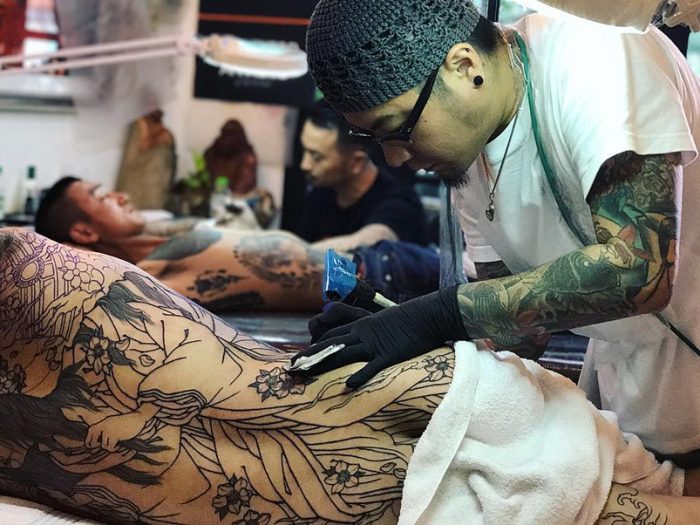Japanese and Asian tattoo art not only has beautiful symbolism but they are usually an illustration of some of the legends that permeate Japanese history. Just like with Aesop’s fables, Japanese myths and legends impart wisdom and motivational speech, much like an elaborate version of the “I refuse to sink” which is so popular today. Here’s a few of the most iconic symbols you’ll find in Japanese Tattoos.
Namazu – the Earthshaker
Pictured as a giant catfish, legend has is that the giant fish was responsible for causing earthquakes and was even worshipped as a god a tone point. The fish lurks in the seas an rivers in Japan with Kashima (a legendary Samurai) tasked with subduing the fish by (and this is where legend starts to differ depending on who is telling the story) pinning the fish to the ocean floor with a large rock, a sword, or a jug of sake. The tattoo also had some political connotations at one time.
You may also see samurai subduing the fish which references a different legend. In this story the fish ate the samurai’s father when he was a boy so the samurai has come to seek revenge.
Foo Dogs – Lions and Protectors
A foo dog is a fearsome sight and despite being translated as “dog” the term really means a Chinese Lion and refers to when the Chinese ruled Japan and had statues of these lions as an homage to when lions really did live in China. These were considered to be protective symbols to ward away demons and usually come in male/female pairs. The male would protect the structure while the female would protect the inhabitants, rather like magical guard dogs.
Sakura – Cherry Blossom
These little pink flowers are very common in Japanese imagery. In the Spring these blossom coat the country with pink petals and many festivals take place to celebrate the sakura. These are usually only used as an accompaniment to a larger piece rather than a tattoo on it’s own. The main theme is usually one of death or destruction tempered by the “life” of the blossoms.
Koi – Goldfish
These fish have a huge part in many Japanese legends, the most notable being the legend of the koi that became a dragon. The koi admired the birds and dragons flying above but the other koi ridiculed him telling him he would never be like them since fish cannot fly. The koi swam up river until he came to a waterfall and when he swam over the waterfall he flew and became a dragon. The meaning is clear – overcoming adversity and not letting others hold you back. Perseverance through adversity is also the theme of many lotus tattoos which is why you’ll commonly find koi and lotuses together as well as koi and dragons.
Gold was also considered to be a lucky color, and in History at one point the only person allowed to own or wear anything gold was the emperor himself.
- Red koi are used to represent love and masculinity, its also considered to be a lucky color.
- Black koi are used to show overcoming darkness or difficulty.
- Blue koi which are swimming downwards show adversity that has already been overcome and success.
- Two koi in a yin yang design shows balance.
- A dragon headed koi represents the legend above and shows that the koi has already overcome adversity. It shows success, strength, power, rebirth and a new beginning.



